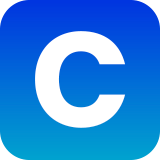A simple product idea is a basis for any business when it comes to developing a digital product. Of course, when inspiration strikes, there are various ideas to consider, but how a product team brings those ideas to life can significantly impact the outcome.
That's where a product development strategy comes in handy; because you'll need a way to get your product from concept to consumer, and the full-cycle product development process will get you there.
In this article, we'll walk you through the phases of full-cycle product development and demonstrate the approach to creating a product that users want - an absolute market fit. After all, you want users to find value in your product, start paying for it, and adore it with all their hearts!
However, before we go into the stages of a product's complete life cycle, let's explore full-cycle product development and how it varies from traditional ways.
What is Full Cycle Product Development?
Throughout its lifecycle, a digital product goes through various stages. In a nutshell, the product development life cycle is a set of phases that a product goes through as it develops.
Full Cycle Product Development is a cutting-edge method for developing software. It's a sequence of stages, tools, techniques, and management approaches that take a product's concept from conception to implementation and, eventually, to market.
The Full Cycle Product Development Cycle aims to validate a successful product concept on the market while lowering business risks.
Understanding Phases of Full Cycle Product Development Cycle
The entire cycle is divided into four primary phases that can be followed to produce a new product from the ground up. The four stages of fine-tuning your product to meet the market's needs include prototyping, testing with an MVP, determining product-market fit, scaling, and product maintenance.
Prototyping
Product prototyping allows you to validate a product's basic idea and assumptions for the least cost and effort by gathering user feedback, gaining valuable user experience insights, and improving the overall design before investing directly into overall product development.
Prototypes are the initial real-world test of your product concept, determining whether there is a valid and current market need for your product.
Prototyping allows you to comprehend better the suggested characteristics of your design, their risks, their possible market effect, and whether or not you have a profitable business concept.
Product designers with experience in UX/UI, wireframing, and user testing will generally make up the prototype team. To create prototypes, low to no-code solutions can be adopted, eliminating the requirement for developers.
In addition, prototypes can help you get attention from stakeholders and investors by allowing you to test your product concept with real customers. As you already have something to show stakeholders and possible investors, having a prototype of your digital application paves the path to meeting them.
Minimum Viable Product Development
The MVP is the miniature model of a proposed product made available to real users for businesses to validate their ideas and assumptions. You can determine whether a product will become successful by observing the user's experience.
From a business perspective, the MVP concept is to rapidly-produce a digital product with minimal work that delivers the bare minimum of functionality while making the app usable and completely functional.
On that point, let's clear up some frequent misconceptions regarding MVPs. First and foremost, an MVP is a functional piece of software that can and should be used by actual people and is ready to go to market.
Second, an MVP is not a final version of an app; it may be enhanced with additional features depending on consumer feedback and data gathered from real users. Finally, an MVP is not only linked with startups. MVPs may be beneficial to businesses of all sizes and in a variety of sectors.
An MVP may have a lot of benefits for your current and future products if you develop and use them correctly.
Product Market-Fit
If all goes well in the previous phases, we'll move on to the Product-Market Fit stage, which is crucial in the digital product development process. You test, evaluate, and iterate the product in cycles at this stage to ensure that it is an excellent match for the market.
This stage is all about fine-tuning your offering to appeal more directly to market demands discovered. As a result, it necessitates tight collaboration with both the customer and the intended consumers.
Thus, the first point of true success in the product development process is product-market fit. Before this point, everything has been about vision, experimentation, and effort. Once you've achieved product-market fit, you'll know you've created a product that has value outside of your project, a product that is recognized and desired in the marketplace.
Product Scaling
Scaling is the process of ensuring that a product is stable enough to survive and prosper in a marketplace. It's all about increasing the number of users, which is generally accomplished by targeting more particular user demand. Thus, scaling helps in maintaining product sustainability and stability.
At this stage, the emphasis is on ensuring that your product is a perfect fit for the market and resilient and reliable enough, with the key in-demand features, to gain the market share you envisioned when you initially started developing your product idea.
It's all about implementing targeted product upgrades while the product is in use, ideally without disrupting current consumers.
How Does Full-Cycle Product Development Impact Digital Product Owners?
So, you've come up with an idea for a superb digital product, mobile app, or new business? But you're looking for a low-risk strategy that will keep things from going wrong!
So, there you have it! Full-cycle product development can help you save money, time, and stress in the long run. You may have a brilliant product idea but executing it requires successful strategies. When Cubix builds your software solution, we conduct deep analyses and look for what value we can during each phase of Full-cycle product development.
How are we nailing it at Cubix?
Cubix is a full-cycle software development company, which means we take your concept, nurture it, and turn it into a digital product that meets your deadline, budget, and most pressing needs while also generating value for businesses and customers.
After all, we are big believers in agile methodologies, and we adopt full-cycle product development since it lowers the chance of product failure and increases ROI. In addition, Full Cycle Product Development allows us to identify market risks and opportunities.
We can look after your project and assist you at every level of its growth. Our professionals can discuss your concept, create a prototype, test the product, and deliver a high-quality, ready-to-use solution.
Wrapping Up!
Each stage of the product development process is critical to its success, from an idea to a marketable product. The Full Cycle Development Process assists in selecting the appropriate target group, the most impactful tools, techniques, and the most appropriate technology for your product to prevail.
Full-cycle development is gaining popularity since it promotes diverse teams and broadens to fit your project and take to a successful conclusion. In addition, at each stage of the procedure, it responds to several queries.
Bottom line: professionals at Cubix is driven by perfection, continuously aiming to enhance products to help you grow your business. Furthermore, you have full assurance that your product is ready for market and can be scaled quickly.
Feel free to reach out if you have any questions or want to learn more about leveraging a Full Cycle product development service.

